-
 Bitcoin
Bitcoin $106,731.2224
-1.05% -
 Ethereum
Ethereum $2,444.9804
-1.20% -
 Tether USDt
Tether USDt $1.0003
0.01% -
 XRP
XRP $2.1882
0.09% -
 BNB
BNB $651.1435
-0.61% -
 Solana
Solana $148.3252
-2.09% -
 USDC
USDC $1.0000
0.01% -
 TRON
TRON $0.2787
0.55% -
 Dogecoin
Dogecoin $0.1598
-3.16% -
 Cardano
Cardano $0.5520
-2.43% -
 Hyperliquid
Hyperliquid $39.0960
-2.64% -
 Bitcoin Cash
Bitcoin Cash $516.9519
2.98% -
 Sui
Sui $2.7011
-2.95% -
 Chainlink
Chainlink $13.0582
-1.71% -
 UNUS SED LEO
UNUS SED LEO $8.9250
-2.53% -
 Stellar
Stellar $0.2359
-0.18% -
 Avalanche
Avalanche $17.3856
-3.73% -
 Toncoin
Toncoin $2.8095
-3.56% -
 Shiba Inu
Shiba Inu $0.0...01121
-1.95% -
 Litecoin
Litecoin $85.2795
-0.85% -
 Hedera
Hedera $0.1471
-2.15% -
 Monero
Monero $319.8004
1.12% -
 Dai
Dai $1.0001
0.01% -
 Ethena USDe
Ethena USDe $1.0001
0.02% -
 Bitget Token
Bitget Token $4.5344
-1.07% -
 Polkadot
Polkadot $3.3224
-2.96% -
 Uniswap
Uniswap $6.9697
-2.75% -
 Aave
Aave $266.1658
-2.25% -
 Pepe
Pepe $0.0...09414
-3.41% -
 Pi
Pi $0.4913
-3.29%
What is the reason why Coinbase Wallet prompts "Transaction Failed"?
"Transaction Failed" errors in Coinbase Wallet can result from insufficient funds, network congestion, incorrect gas settings, smart contract issues, wrong addresses, low fees, or connectivity problems.
Apr 06, 2025 at 01:36 pm
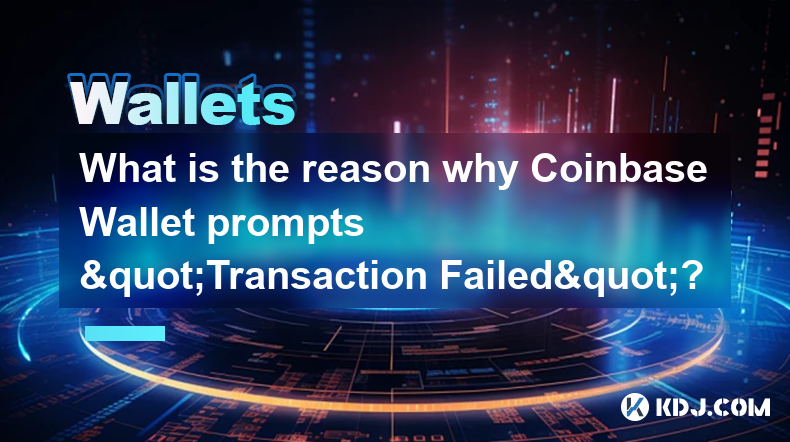
When using Coinbase Wallet, encountering a "Transaction Failed" prompt can be frustrating and confusing. This error message can stem from various issues within the cryptocurrency ecosystem. Understanding the reasons behind this error is crucial for users to resolve the problem and successfully complete their transactions. In this article, we will explore the common causes of the "Transaction Failed" error in Coinbase Wallet and provide detailed explanations and solutions for each scenario.
Insufficient Funds
One of the most common reasons for a "Transaction Failed" error in Coinbase Wallet is insufficient funds in the user's account. When attempting to send cryptocurrency, the wallet checks if the user has enough balance to cover the transaction amount and the associated network fees. If the balance is too low, the transaction will fail.
To resolve this issue, users should:
- Check their wallet balance to ensure they have enough funds for the transaction and the required network fees.
- If the balance is insufficient, add more funds to the wallet or reduce the transaction amount.
- Verify that the correct cryptocurrency is being used for the transaction, as some wallets may have multiple currencies.
Network Congestion
Another frequent cause of the "Transaction Failed" error is network congestion on the blockchain. When a blockchain network experiences high traffic, transactions may take longer to process or fail altogether. This is particularly common during periods of high market volatility or when a new cryptocurrency project launches.
To mitigate the impact of network congestion:
- Wait for a period of lower network activity before retrying the transaction.
- Consider using a different blockchain network with lower congestion, if possible.
- Adjust the transaction fee to a higher amount, as this may prioritize the transaction on the network.
Incorrect Gas Limit or Gas Price
For transactions on the Ethereum network, setting an incorrect gas limit or gas price can lead to a "Transaction Failed" error. The gas limit determines the maximum amount of computational effort a transaction can use, while the gas price sets the fee per unit of gas.
To resolve gas-related issues:
- Ensure that the gas limit is set appropriately for the type of transaction being performed. For simple transfers, a standard gas limit is usually sufficient, but more complex transactions may require a higher limit.
- Adjust the gas price to a competitive level based on current network conditions. Setting the gas price too low may result in the transaction being stuck or failing, while setting it too high may lead to unnecessary fees.
- Use a gas estimator tool or consult the latest network data to determine an optimal gas price.
Smart Contract Reversion
When interacting with smart contracts on the Ethereum network, a "Transaction Failed" error may occur due to a smart contract reversion. This happens when the smart contract's logic prevents the transaction from being executed successfully, often due to unmet conditions or errors in the contract code.
To address smart contract reversion issues:
- Carefully review the smart contract's documentation and requirements before initiating a transaction.
- Ensure that all necessary conditions are met, such as having the required token balance or meeting specific criteria set by the contract.
- If the error persists, contact the smart contract's developers or the project's community for assistance in resolving the issue.
Incorrect Recipient Address
Entering an incorrect recipient address is another common reason for a "Transaction Failed" error in Coinbase Wallet. If the address is invalid or does not exist on the blockchain, the transaction will fail.
To prevent and resolve address-related issues:
- Double-check the recipient's address before confirming the transaction. A single incorrect character can lead to a failed transaction.
- Use the wallet's built-in address book or QR code scanning feature to minimize the risk of manual entry errors.
- If the transaction fails due to an incorrect address, verify the correct address and retry the transaction.
Insufficient Network Fees
In some cases, the "Transaction Failed" error may be caused by insufficient network fees. Each blockchain network has its own fee structure, and if the user sets the fee too low, the transaction may not be processed by the network.
To resolve fee-related issues:
- Check the current network fee recommendations for the specific blockchain being used.
- Adjust the transaction fee to meet or exceed the recommended minimum.
- Consider using a fee estimation tool provided by the wallet or a third-party service to determine an appropriate fee level.
Wallet Connectivity Issues
Lastly, wallet connectivity issues can also lead to a "Transaction Failed" error. If the Coinbase Wallet app or browser extension cannot establish a stable connection to the blockchain network, transactions may fail.
To address connectivity problems:
- Ensure that the device has a stable internet connection and try restarting the wallet app or browser.
- Check if the wallet's servers are experiencing any known issues or maintenance by visiting the Coinbase Wallet status page.
- If the problem persists, consider using a different device or network to access the wallet and retry the transaction.
Frequently Asked Questions
Q: Can I recover a failed transaction in Coinbase Wallet?
A: In most cases, failed transactions cannot be recovered directly through Coinbase Wallet. However, depending on the specific reason for the failure, you may be able to retry the transaction with adjusted parameters or contact the recipient to resolve any issues.
Q: How long should I wait before retrying a failed transaction?
A: The waiting time before retrying a failed transaction depends on the cause of the failure. For network congestion issues, waiting a few hours or until the next day may be necessary. For other issues, such as insufficient funds or incorrect parameters, you can retry the transaction immediately after making the necessary adjustments.
Q: Can I cancel a pending transaction in Coinbase Wallet?
A: Coinbase Wallet does not provide a direct option to cancel pending transactions. However, if the transaction has not been mined yet, you may be able to replace it with a new transaction using a higher fee, depending on the blockchain network's capabilities.
Q: Are there any fees associated with failed transactions in Coinbase Wallet?
A: In most cases, failed transactions do not incur fees, as they are not processed by the blockchain network. However, if the transaction was partially processed or if the network charges a fee for failed transactions, you may be responsible for those fees. Always check the specific fee structure of the blockchain network you are using.
Disclaimer:info@kdj.com
The information provided is not trading advice. kdj.com does not assume any responsibility for any investments made based on the information provided in this article. Cryptocurrencies are highly volatile and it is highly recommended that you invest with caution after thorough research!
If you believe that the content used on this website infringes your copyright, please contact us immediately (info@kdj.com) and we will delete it promptly.
- Powell, Stablecoin Regulation, and Circle's Bold Move: A New York Minute on Crypto's Future
- 2025-07-02 02:30:12
- Ethereum Price, Tom Lee, and Bitcoin: A New Era for Crypto?
- 2025-07-02 02:30:12
- Hoskinson, Ripple, Cardano DeFi: A New Era of Collaboration?
- 2025-07-02 02:35:12
- BlockDAG, ALGO, and the Crypto Trends Shaping 2025
- 2025-07-02 01:50:12
- Cold Wallet, Token, Gains: Is CWT the Smartest Crypto Move?
- 2025-07-02 01:10:12
- Pi Coin's Rocky Ride: Support Levels, Recovery Timeline, and What the Experts Are Saying
- 2025-07-02 01:10:12
Related knowledge
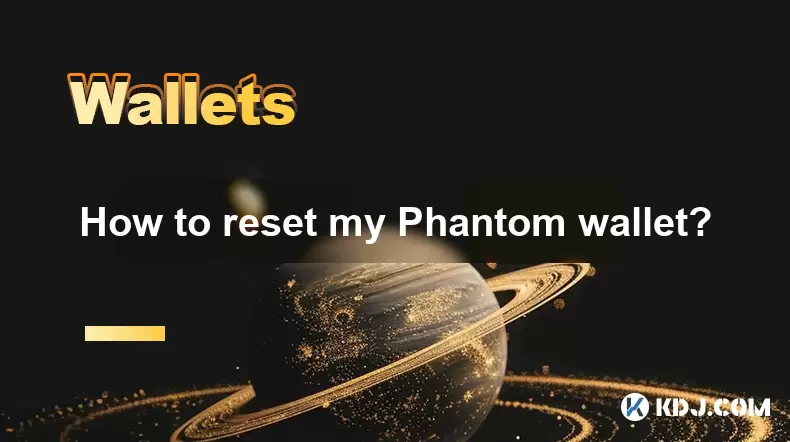
How to reset my Phantom wallet?
Jul 02,2025 at 12:36am
Understanding the Need for Resetting Your Phantom WalletIf you're using a Phantom wallet, you may encounter situations where resetting your wallet becomes necessary. This could be due to forgotten passwords, seed phrase issues, or account corruption. Phantom is a non-custodial wallet primarily used for interacting with the Solana blockchain, and it stor...
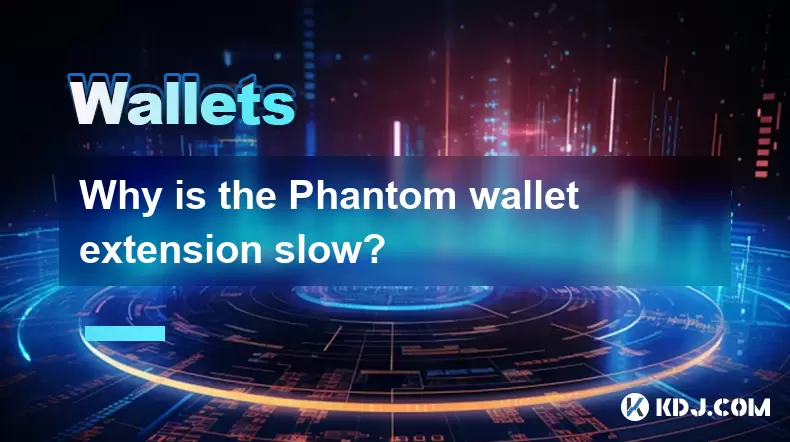
Why is the Phantom wallet extension slow?
Jul 02,2025 at 04:15am
Phantom Wallet Extension: Why Is It Slow?Phantom wallet is a widely used browser extension for interacting with decentralized applications (dApps) on the Solana blockchain. Despite its popularity, some users report that the Phantom wallet extension runs slowly at times. This article delves into potential reasons behind this performance issue and provide...
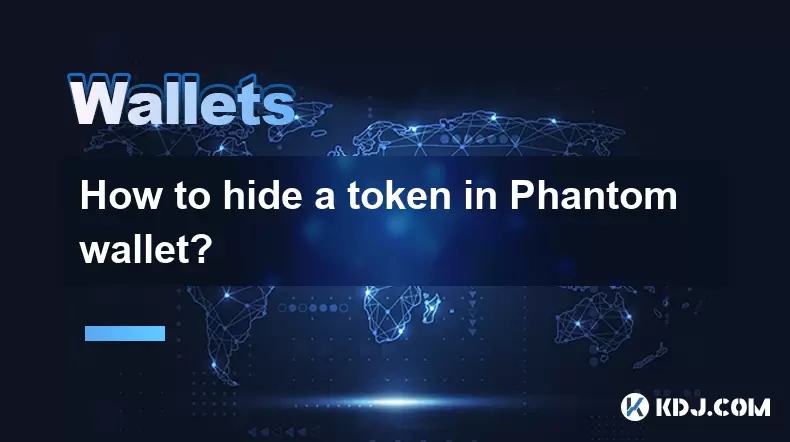
How to hide a token in Phantom wallet?
Jul 01,2025 at 05:49pm
Understanding the Phantom Wallet InterfacePhantom wallet is a popular non-custodial wallet used primarily for interacting with the Solana blockchain. It allows users to store, send, receive, and manage various tokens, including both fungible and non-fungible tokens (NFTs). Before attempting to hide a token, it's essential to understand how the wallet in...
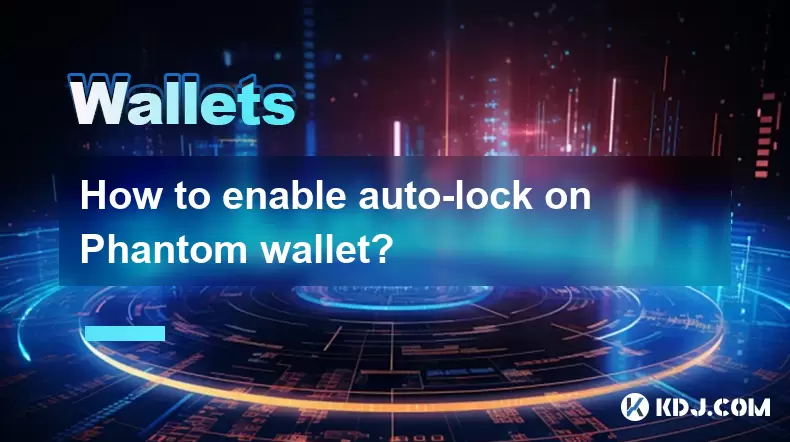
How to enable auto-lock on Phantom wallet?
Jul 01,2025 at 04:01pm
What is Auto-Lock in Phantom Wallet?Phantom wallet is a popular non-custodial cryptocurrency wallet used primarily for interacting with the Solana blockchain. One of its security features includes the ability to set an auto-lock timer, which ensures that the wallet locks itself automatically after a period of inactivity. Auto-lock enhances security by p...
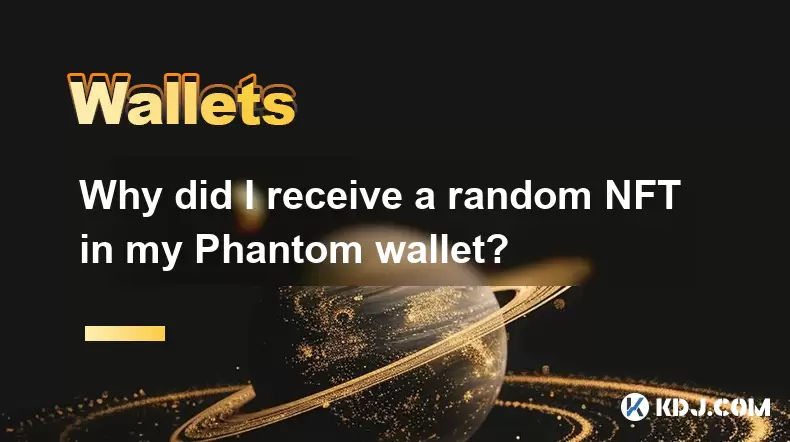
Why did I receive a random NFT in my Phantom wallet?
Jul 01,2025 at 09:00pm
Receiving an Unexpected NFT in Your Phantom WalletIf you've recently opened your Phantom wallet and noticed an unfamiliar NFT appearing in your collection, you're not alone. Many users have reported receiving random or unsolicited non-fungible tokens, often without any prior interaction with the project or sender. This phenomenon has become increasingly...
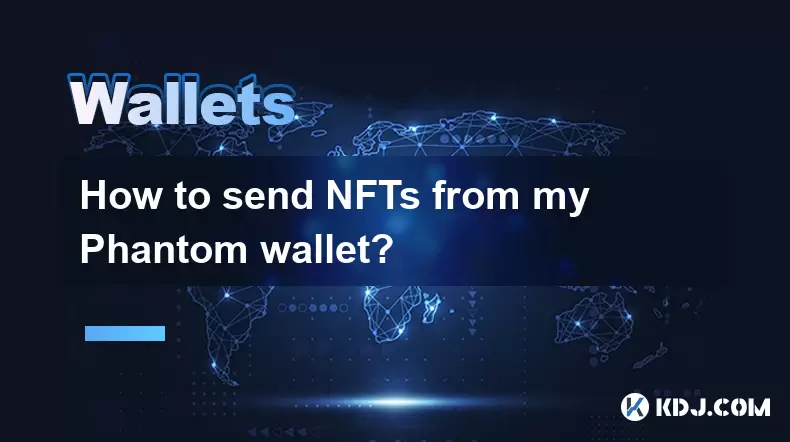
How to send NFTs from my Phantom wallet?
Jul 02,2025 at 03:15am
What is Phantom Wallet and Why Use It for NFT Transfers?Phantom wallet is a non-custodial cryptocurrency wallet primarily used for interacting with the Solana blockchain. It supports both tokens and NFTs, making it a popular choice among users who engage in decentralized finance (DeFi) or digital collectibles. The interface is user-friendly, allowing ev...

How to reset my Phantom wallet?
Jul 02,2025 at 12:36am
Understanding the Need for Resetting Your Phantom WalletIf you're using a Phantom wallet, you may encounter situations where resetting your wallet becomes necessary. This could be due to forgotten passwords, seed phrase issues, or account corruption. Phantom is a non-custodial wallet primarily used for interacting with the Solana blockchain, and it stor...

Why is the Phantom wallet extension slow?
Jul 02,2025 at 04:15am
Phantom Wallet Extension: Why Is It Slow?Phantom wallet is a widely used browser extension for interacting with decentralized applications (dApps) on the Solana blockchain. Despite its popularity, some users report that the Phantom wallet extension runs slowly at times. This article delves into potential reasons behind this performance issue and provide...

How to hide a token in Phantom wallet?
Jul 01,2025 at 05:49pm
Understanding the Phantom Wallet InterfacePhantom wallet is a popular non-custodial wallet used primarily for interacting with the Solana blockchain. It allows users to store, send, receive, and manage various tokens, including both fungible and non-fungible tokens (NFTs). Before attempting to hide a token, it's essential to understand how the wallet in...

How to enable auto-lock on Phantom wallet?
Jul 01,2025 at 04:01pm
What is Auto-Lock in Phantom Wallet?Phantom wallet is a popular non-custodial cryptocurrency wallet used primarily for interacting with the Solana blockchain. One of its security features includes the ability to set an auto-lock timer, which ensures that the wallet locks itself automatically after a period of inactivity. Auto-lock enhances security by p...

Why did I receive a random NFT in my Phantom wallet?
Jul 01,2025 at 09:00pm
Receiving an Unexpected NFT in Your Phantom WalletIf you've recently opened your Phantom wallet and noticed an unfamiliar NFT appearing in your collection, you're not alone. Many users have reported receiving random or unsolicited non-fungible tokens, often without any prior interaction with the project or sender. This phenomenon has become increasingly...

How to send NFTs from my Phantom wallet?
Jul 02,2025 at 03:15am
What is Phantom Wallet and Why Use It for NFT Transfers?Phantom wallet is a non-custodial cryptocurrency wallet primarily used for interacting with the Solana blockchain. It supports both tokens and NFTs, making it a popular choice among users who engage in decentralized finance (DeFi) or digital collectibles. The interface is user-friendly, allowing ev...
See all articles

























































































